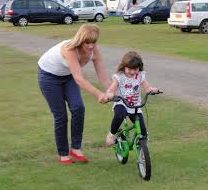
When you learn to ride a bicycle your moving center is learning a motor feedback loop. Note that you cant do it intellectually because the moving center has no language. Second, getting emotional slows down the learning, and a big fright can make you give up entirely. Third, you need to practice because this is how the moving center learns, maybe with someone helping you in the beginning. There are no shortcuts to learning a motor skill – its just practice. The good news is, we all have a moving center so we can all learn this way.
Three ways of knowing
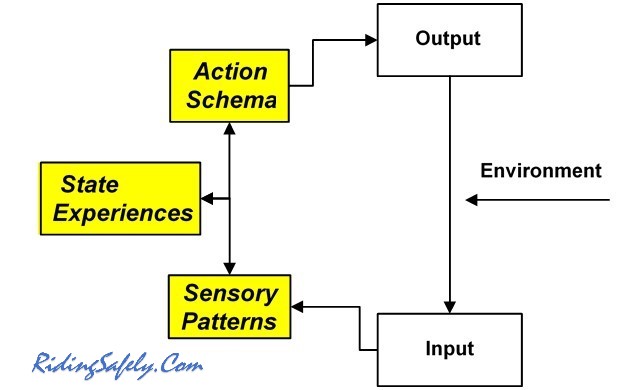
Three centers mean we have three ways of knowing:
- Intellectual. Analyzing sensory patterns gives thoughts and ideas.
- Emotional. Analyzing experiences gives likes and dislikes.
- Tacit. Analyzing motor feedback gives movement skills.
Most of us are aware of what we think. Many of us are aware of what we feel. Yet very few of us indeed are aware of tacit skills. Tacit knowledge is the stuff you know unconsciously, like how balance on a bicycle. Tacit knowledge is largely unsung, but it is the key to riding safely.
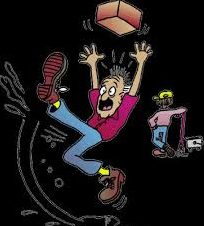
The way to turn intellectual knowledge into moving center knowledge is automation.
Automation

Automation suggests becoming mechanical, but here it means transferring knowledge to the moving center, which is anything but mechanical. What you read about riding a motorcycle is going into the intellectual part of your brain, but that knowledge is no use there. How do you “translate” intellectual knowledge into tacit knowledge? It seems hard but sportsmen do it all the time. If you need a better grip in a sport like golf, first you do it intellectually but with practice the moving center learns and takes over. Then you get the benefits. Likewise in riding, what you initially do with the clumsy intellect will transfer to the moving center by practice. Only when your actions become automatic do you really “know” them.
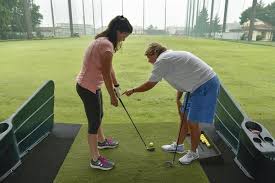
Academics who dismiss the moving center as a “reptile brain” don’t understand its potential. When a skilled pianist’s fingers fly over a keyboard, he or she doesn’t think “I will play A sharp”. Indeed their intellect can discuss the weather while the moving center alone controls their hands. The human moving center is under-rated because it cant talk, but it is the key to learning a motor skill like riding.
Scan-Plan-Act!
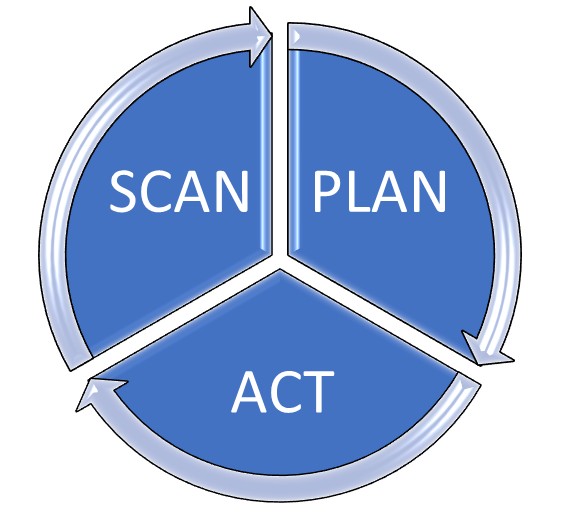
Motorcycle safety classes use the the SIPDE (Scan, Identify, Predict, Decide and Execute) approach. Its good to teach but I find it too complex to remember. Riding is not an logical scenario because intellectual thinking takes too long. For a fast motor feedback loop I prefer Scan-Plan-Act:
- Scan: Scan the world to recognize risk.
- Plan: Plan your next actions to minimize risk.
- Act: Commit to execute an action.
Scan-Plan occurs as you ride along apparently doing nothing much, just just looking and thinking. By thinking here is meant planning your next move, not pondering the meaning of life. “Thinking all the time” is the motto of the safe rider. The Act part kicks in when you do something, like turn a corner. An emergency, like when you skid and recover, shows how fast a motor loop can be. It cycles in microseconds not seconds. Motor loops work best when you are wide awake, calm and giving full attention, without emotions like fear to interfere. Bodily distractions like being cold or wet also interfere, and alcohol or drugs affect motor loops directly. We now look at Scan-Plan-Act in detail.